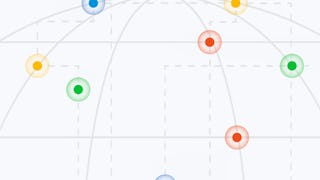- Browse
- Basic Statistics
Results for "basic statistics"
 Status: Free TrialFree TrialC
Status: Free TrialFree TrialCCoursera
Skills you'll gain: Process Mapping, Strategic Thinking, Process Analysis, Process Management, Business Workflow Analysis, Operational Efficiency, Business Process Improvement, Process Improvement, Lean Methodologies, Waste Minimization
4.1·Rating, 4.1 out of 5 stars38 reviewsBeginner · Course · 1 - 4 Weeks
 Status: Free TrialFree TrialS
Status: Free TrialFree TrialSStarweaver
Skills you'll gain: Responsible AI, Organizational Change, Stakeholder Engagement, Change Management, Innovation, Business Transformation, Generative AI, Culture Transformation, Technology Roadmaps, Performance Metric, Employee Engagement, Business Strategy, Communication Strategies
3.7·Rating, 3.7 out of 5 stars6 reviewsIntermediate · Course · 1 - 4 Weeks
 Status: PreviewPreviewP
Status: PreviewPreviewPPolitecnico di Milano
Skills you'll gain: Teaching, Pedagogy, Course Development, Instructional and Curriculum Design, Instructional Strategies, Curriculum Planning, Student-Centred Learning, Innovation, Quality Assessment, Infographics
4.9·Rating, 4.9 out of 5 stars12 reviewsBeginner · Course · 1 - 4 Weeks
 G
GGoogle - Spectrum Sharing
Skills you'll gain: Key Management, Communication Systems, Interoperability, Configuration Management, Telecommunications, Wireless Networks, Data Validation, Geographic Information Systems
Advanced · Course · 1 - 3 Months
 Status: Free TrialFree TrialG
Status: Free TrialFree TrialGGoogle Cloud
Skills you'll gain: Looker (Software), Performance Tuning, Query Languages, Exploratory Data Analysis, Database Management, Continuous Monitoring, Data Analysis, System Monitoring, Google Cloud Platform
Intermediate · Project · Less Than 2 Hours

Skills you'll gain: Classification And Regression Tree (CART), Decision Tree Learning, Predictive Modeling, Data Processing, Statistical Modeling, R Programming, Supervised Learning, Machine Learning Algorithms, Machine Learning
4.8·Rating, 4.8 out of 5 stars6 reviewsBeginner · Guided Project · Less Than 2 Hours
 Status: PreviewPreviewN
Status: PreviewPreviewNNortheastern University
Skills you'll gain: Data Storytelling, Exploratory Data Analysis, Data Visualization, Data Visualization Software, Data Presentation, Interactive Data Visualization, Infographics, Tableau Software, Dashboard, Data Analysis, Data-Driven Decision-Making, Data Ethics, Trend Analysis, Business Analytics, Peer Review
Beginner · Course · 1 - 4 Weeks
 Status: Free TrialFree TrialG
Status: Free TrialFree TrialGGoogle Cloud
Skills you'll gain: Google Gemini, Generative AI, Predictive Modeling, Applied Machine Learning, Big Data, Google Cloud Platform, Data Analysis, Exploratory Data Analysis, Artificial Intelligence and Machine Learning (AI/ML), Prompt Engineering, SQL, LLM Application, Data Processing, Responsible AI, Python Programming, Data Cleansing, Customer Relationship Management, Data Visualization Software, Machine Learning, Natural Language Processing
4.8·Rating, 4.8 out of 5 stars6 reviewsBeginner · Specialization · 1 - 4 Weeks
 Status: NewNewStatus: Free TrialFree Trial
Status: NewNewStatus: Free TrialFree TrialSkills you'll gain: WordPress, Ajax, Development Environment, Content Management Systems, Content Management, Web Development, Data Management, PHP (Scripting Language), Database Development, MySQL, Javascript and jQuery, Information Architecture, Cascading Style Sheets (CSS), Data Security, Data Validation
Intermediate · Specialization · 1 - 4 Weeks
 Status: Free TrialFree TrialC
Status: Free TrialFree TrialCCoursera
Skills you'll gain: Generative AI, Data Analysis, Advanced Analytics, Analytics, Prompt Engineering Tools, AI Product Strategy, Data Transformation, Predictive Analytics, Data Cleansing, Data Processing, Machine Learning Algorithms, Responsible AI
4.3·Rating, 4.3 out of 5 stars11 reviewsIntermediate · Course · 1 - 4 Weeks
 Status: NewNewStatus: Free TrialFree TrialU
Status: NewNewStatus: Free TrialFree TrialUUniversity of Michigan
Skills you'll gain: Unsupervised Learning, Data Mining, Social Network Analysis, ChatGPT, Data Processing, Anomaly Detection, Machine Learning Methods, Data Science, Supervised Learning, Machine Learning, Data Analysis, Data Manipulation, Python Programming, Exploratory Data Analysis, Machine Learning Algorithms, Jupyter, Probability Distribution
4.3·Rating, 4.3 out of 5 stars8 reviewsAdvanced · Specialization · 3 - 6 Months
 Status: NewNewStatus: PreviewPreviewK
Status: NewNewStatus: PreviewPreviewKKnowledge Accelerators
Skills you'll gain: Spreadsheet Software, Pivot Tables And Charts, Data Storytelling, Data Analysis, Data Presentation, Business Modeling, Analytics, Business Analysis, Trend Analysis, Microsoft 365, Data Management, Productivity, Data Entry, Key Performance Indicators (KPIs)
Intermediate · Course · 1 - 3 Months
In summary, here are 10 of our most popular basic statistics courses
- Value Stream Mapping: Coursera
- Change Management for GenAI Integration: Starweaver
- Designing Learning Innovation: an introduction: Politecnico di Milano
- Renew your CBRS Professional Installer certification: Google - Spectrum Sharing
- Optimizing Performance of LookML Queries: Google Cloud
- Decision Tree Classifier for Beginners in R: Coursera
- Healthcare Information Design and Visualizations: Northeastern University
- Gemini in BigQuery: Google Cloud
- Intro to WordPress Development: Packt
- GenAI for Data Analysts: Coursera










